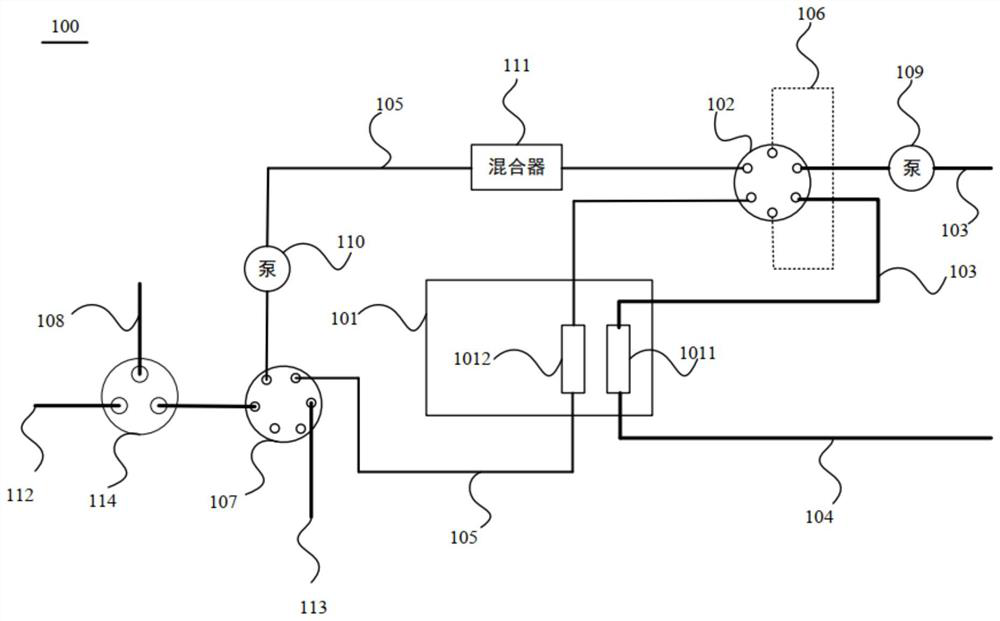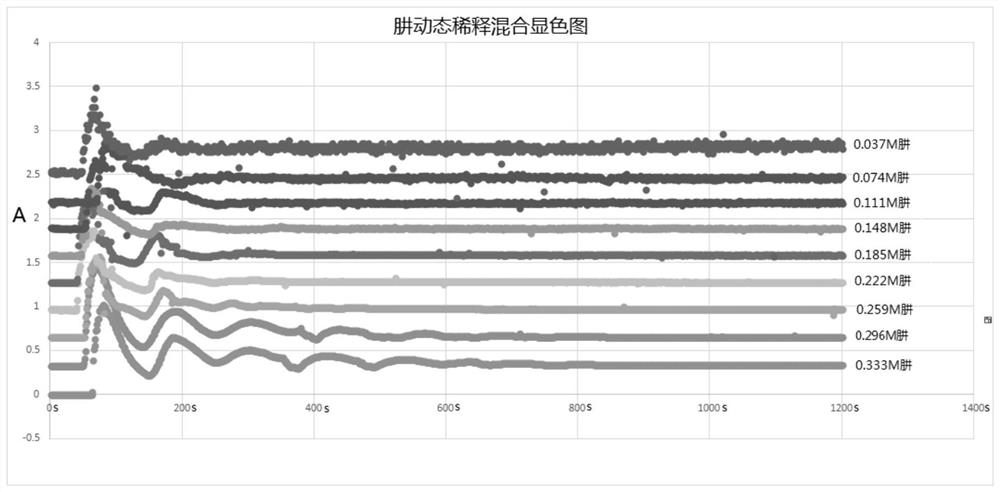Method and system for jointly detecting contents of tetravalent uranium and hydrazine
A joint detection and tetravalent uranium technology, which is applied in the field of joint detection of tetravalent uranium and hydrazine content, can solve the problems of high waste liquid treatment cost, long detection time, and a large amount of waste liquid, and achieve short detection time, good timeliness, and The effect of reducing the generation of waste liquid
- Summary
- Abstract
- Description
- Claims
- Application Information
AI Technical Summary
Problems solved by technology
Method used
Image
Examples
Embodiment 1
[0082] This example is used to illustrate the establishment method of the tetravalent uranium content determination model.
[0083] Prepare a series of tetravalent uranium standard solutions with gradient changes in tetravalent uranium concentration by using tetravalent uranium standard samples, and then use such as figure 1 The detection system shown detects the absorbance value of tetravalent uranium in each tetravalent uranium standard solution under the condition of a wavelength of 531nm, and then based on the concentration of tetravalent uranium in each tetravalent uranium standard solution and its corresponding tetravalent uranium absorbance value , establish the standard working curve, and obtain the determination model of tetravalent uranium content.
[0084] The concentration of tetravalent uranium in each standard solution of tetravalent uranium and the corresponding absorbance of tetravalent uranium are shown in Table 1.
[0085] Table 1
[0086] Tetraval...
Embodiment 2
[0091] This example is used to verify the effect of high concentration of tetravalent uranium on the detection results of hydrazine content.
[0092] Configure the following three liquids to be tested:
[0093] (1) 2.5g / L tetravalent uranium solution (containing 0.5g / L hexavalent uranium) 25μl + chromogen solution 450μl + deionized water 25μl;
[0094] (2) 25 μl of 2.5g / L tetravalent uranium solution (containing 0.5g / L hexavalent uranium) + 450 μl of chromogen solution + 25 μl of 0.0037mol / L hydrazine nitrate solution;
[0095] (3) 25 μl of 0.0037 mol / L hydrazine nitrate solution + 450 μl of developer solution + 25 μl of deionized water.
[0096] Using a spectrophotometric detection device, under the detection condition of a wavelength of 456 nm, the above three liquids to be tested were detected with the chromogenic agent as a blank, and the absorbance values were recorded respectively, as shown in Table 2.
[0097] Table 2
[0098]
[0099] As can be seen from Table ...
Embodiment 3
[0102] This embodiment is used to verify the time when the test result of the spectrophotometer tends to be stable after the sample to be tested is mixed with the developer solution.
[0103] Use hydrazine standard samples to prepare standard solutions with different hydrazine concentrations, and use figure 1 The detection system shown, under the detection condition of wavelength 456nm, detects the absorbance value of each standard solution, and records the change of the absorbance value of each standard solution with time from the time when each standard solution is mixed with the chromogen solution , the detection result is as figure 2 shown.
[0104] Depend on figure 2 It can be seen that from the 10th minute after the hydrazine-containing sample to be tested is mixed with the developer solution, the detection result of the spectrophotometric detection device tends to be stable.
PUM
 Login to View More
Login to View More Abstract
Description
Claims
Application Information
 Login to View More
Login to View More - R&D Engineer
- R&D Manager
- IP Professional
- Industry Leading Data Capabilities
- Powerful AI technology
- Patent DNA Extraction
Browse by: Latest US Patents, China's latest patents, Technical Efficacy Thesaurus, Application Domain, Technology Topic, Popular Technical Reports.
© 2024 PatSnap. All rights reserved.Legal|Privacy policy|Modern Slavery Act Transparency Statement|Sitemap|About US| Contact US: help@patsnap.com










